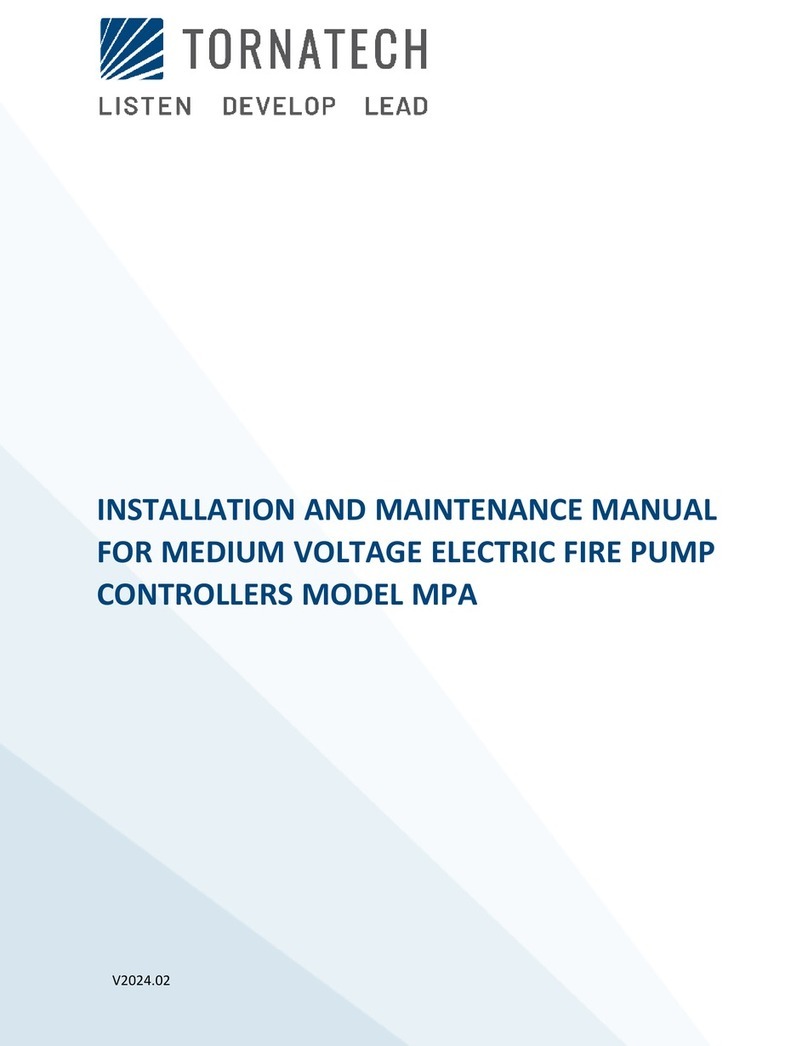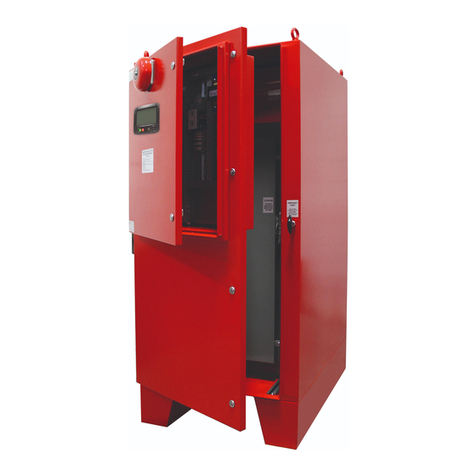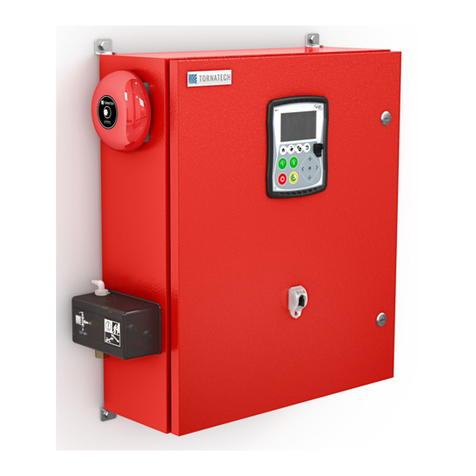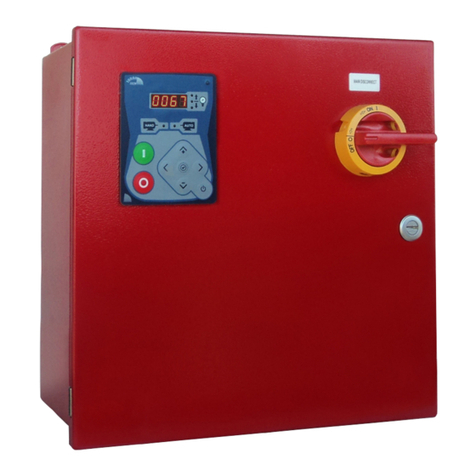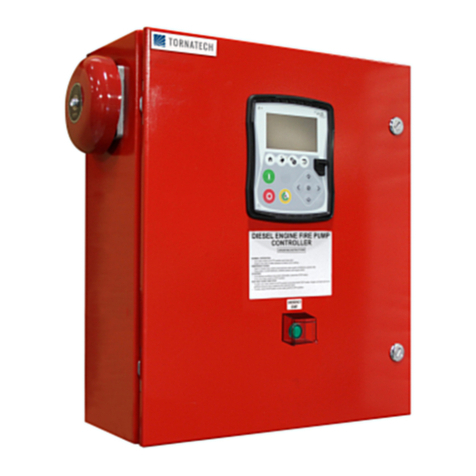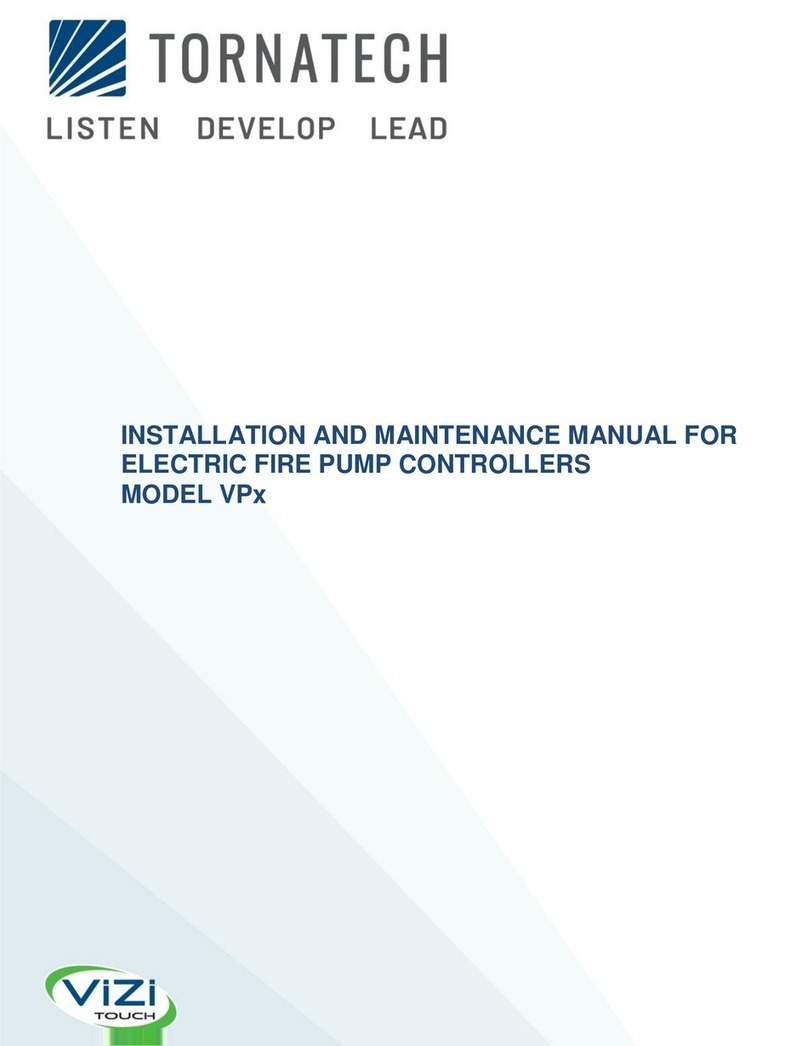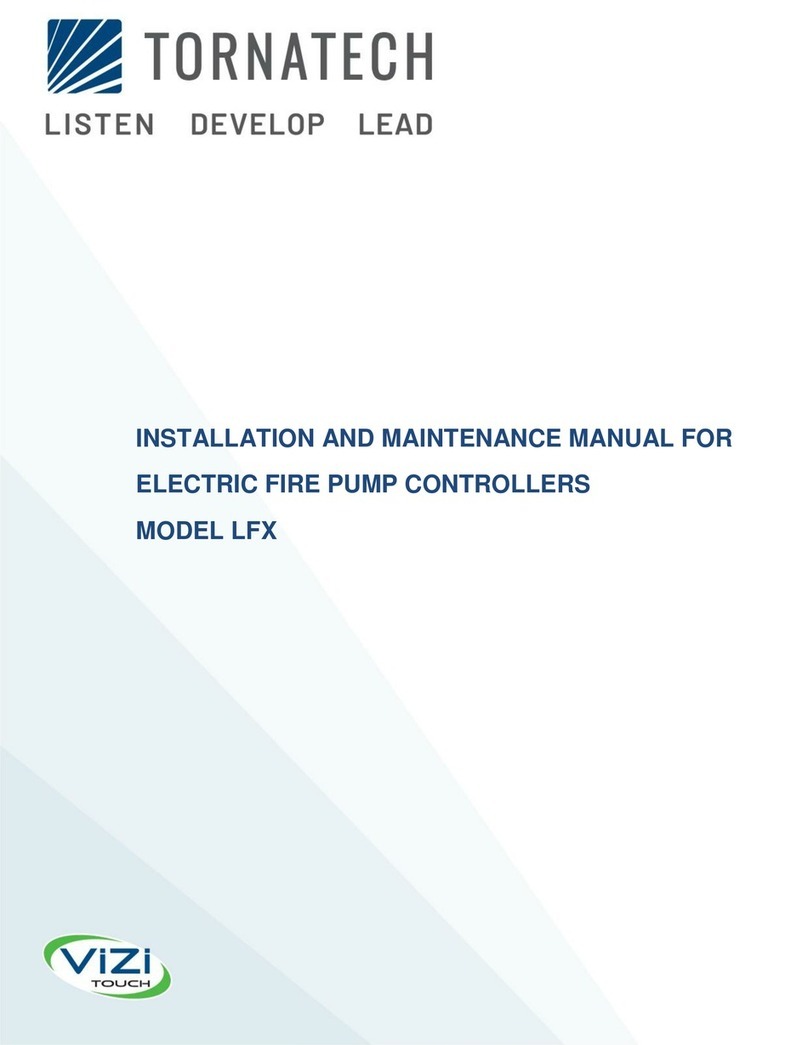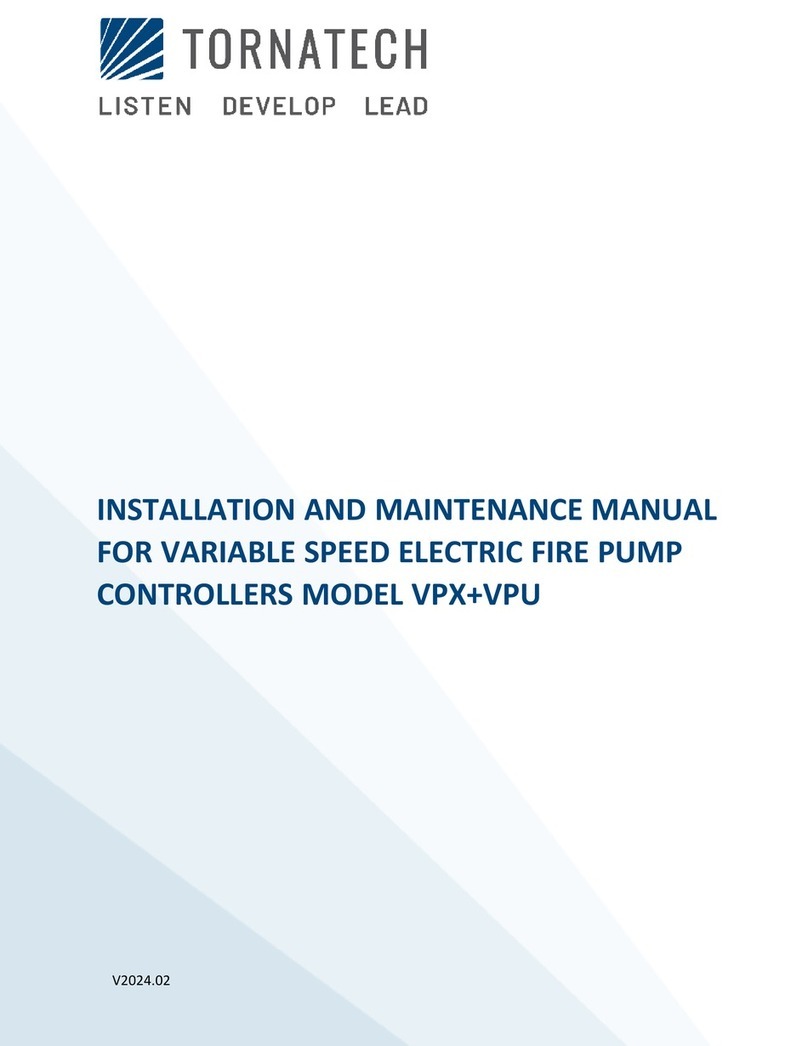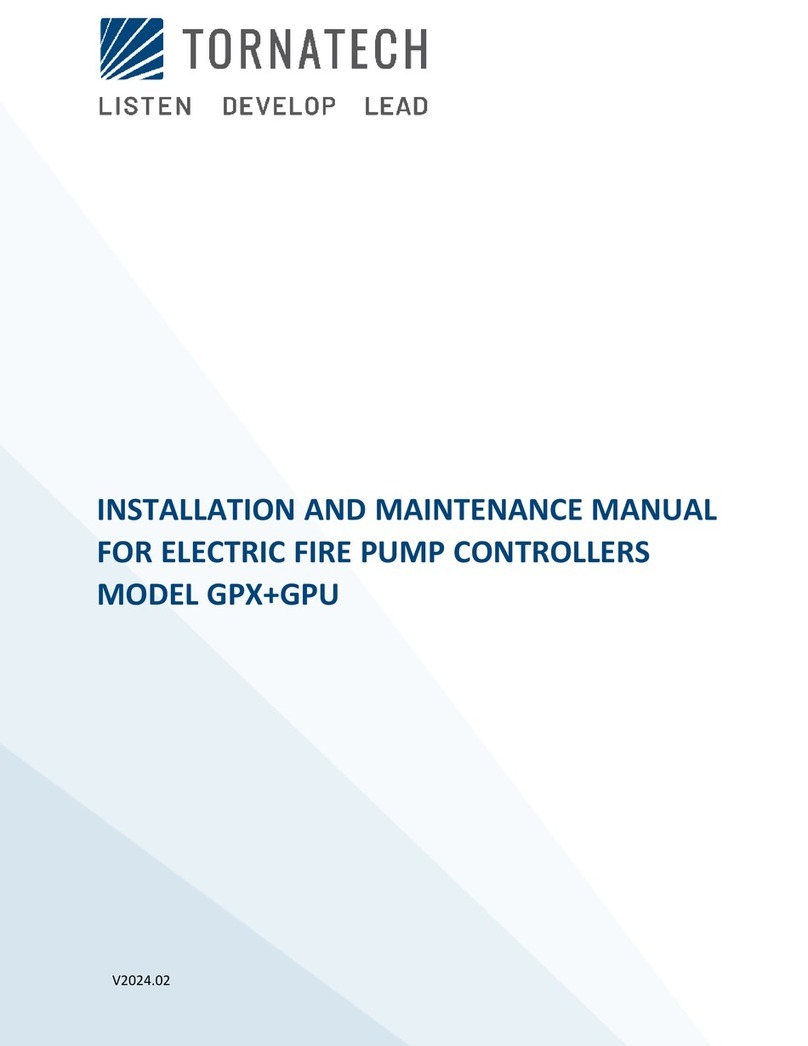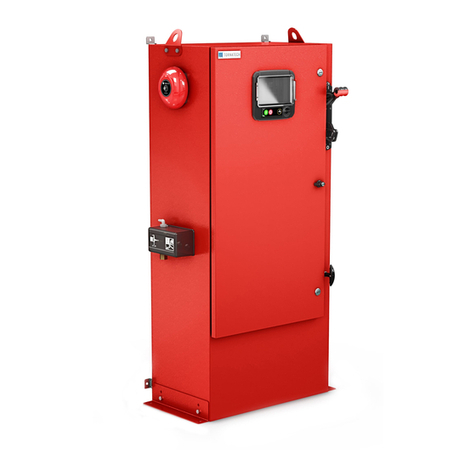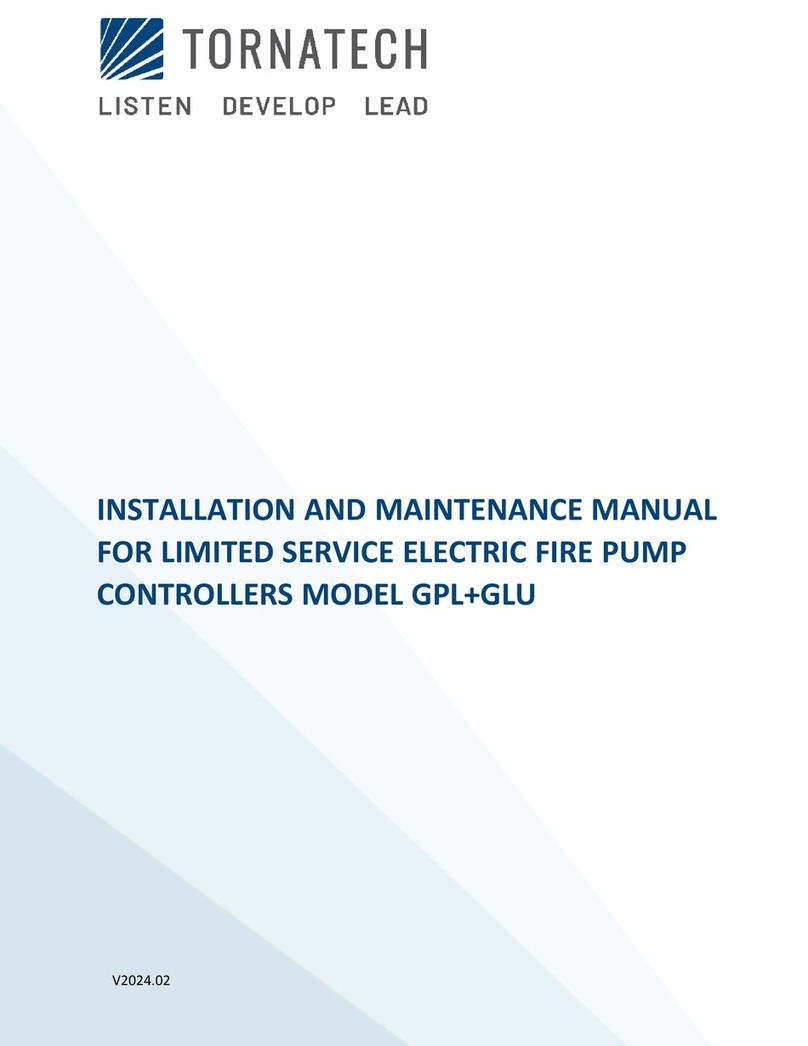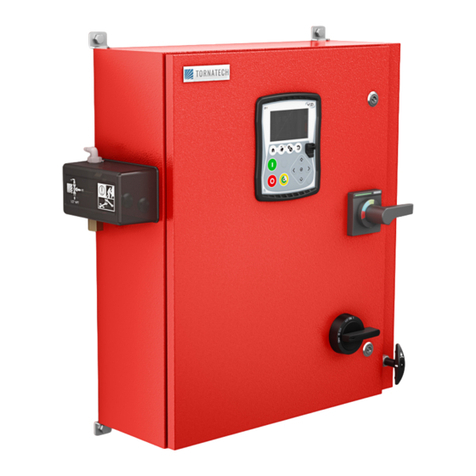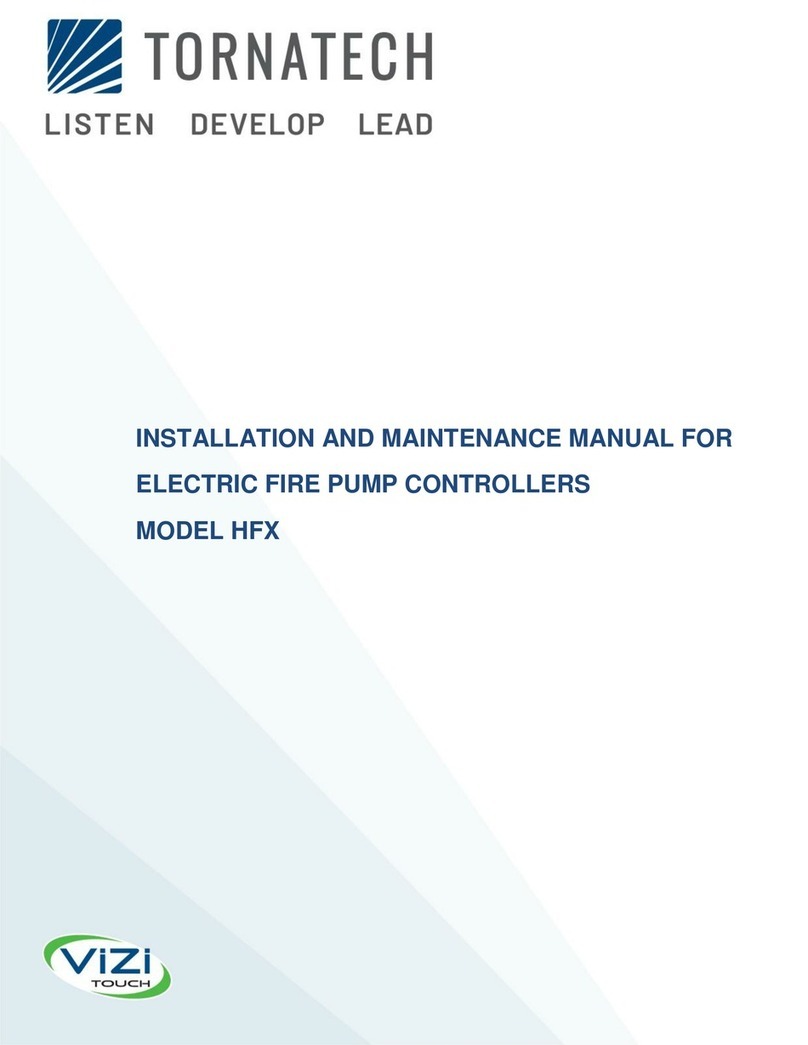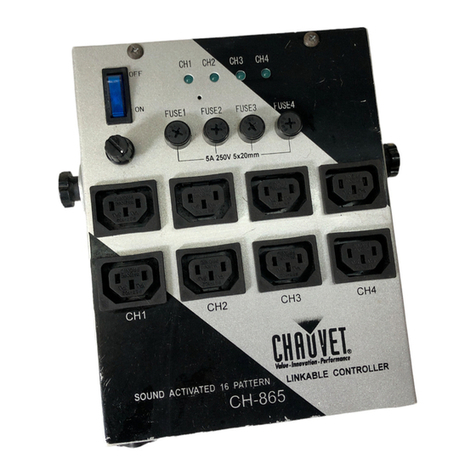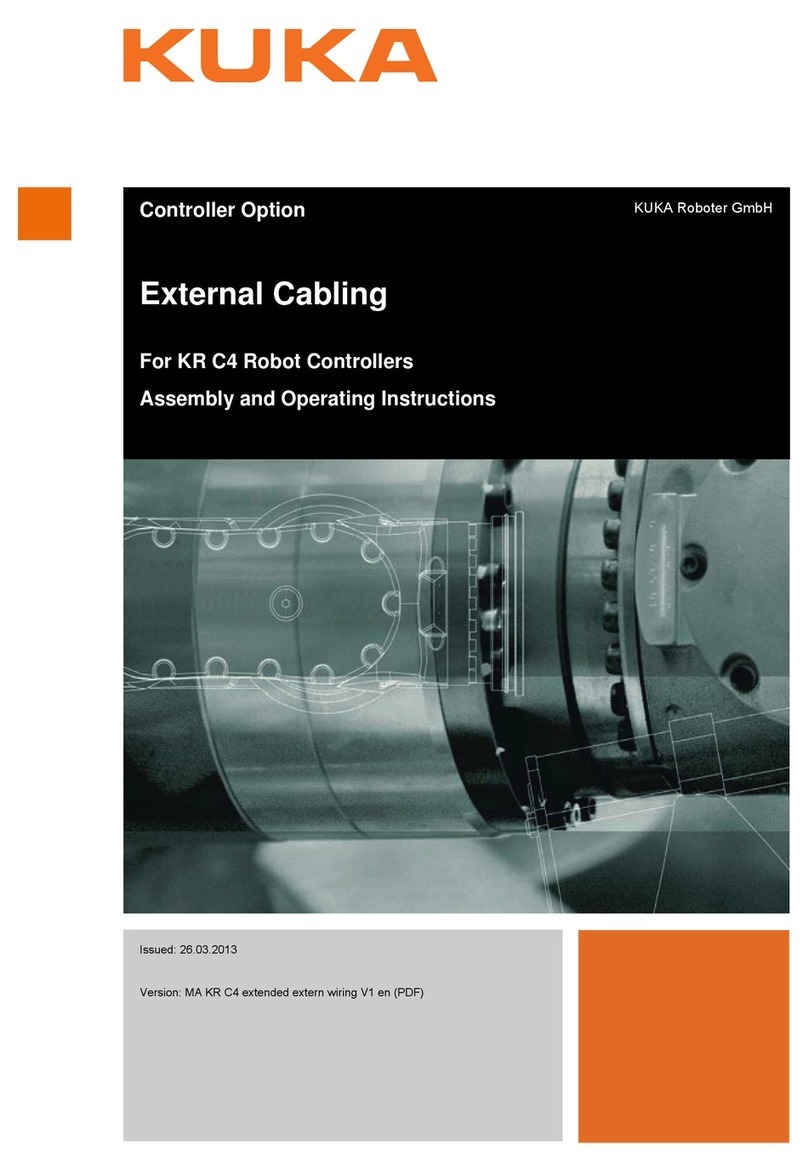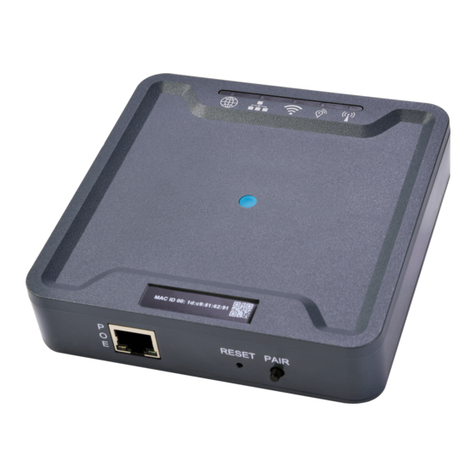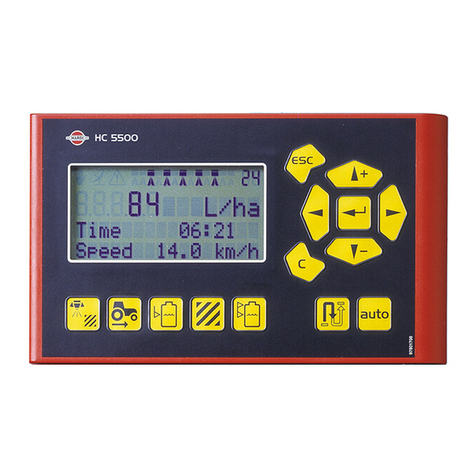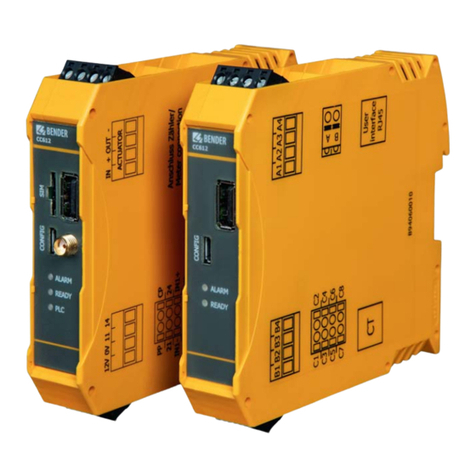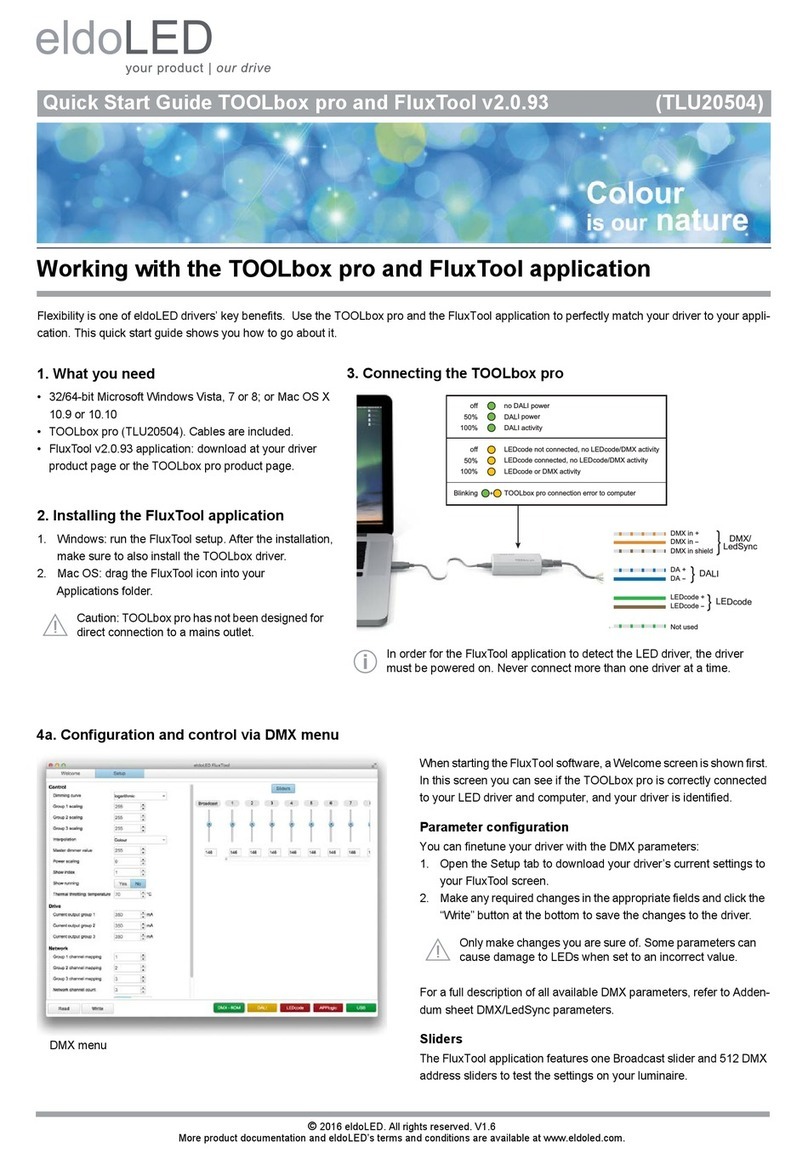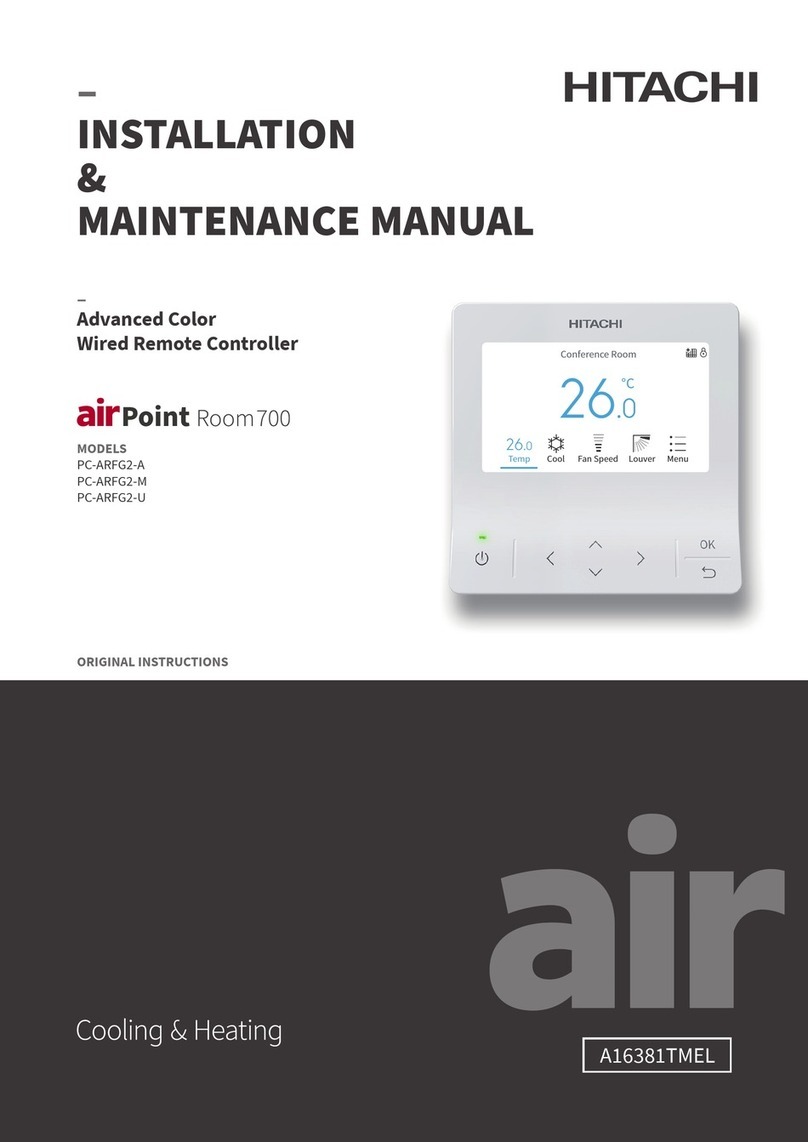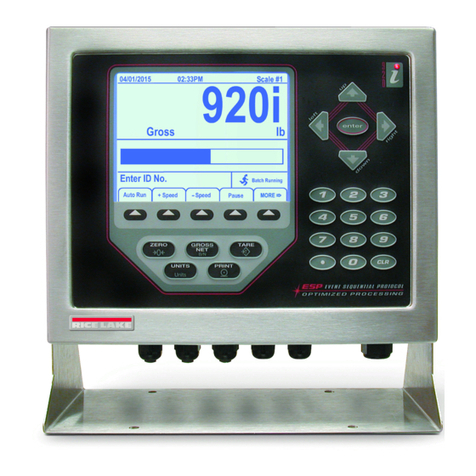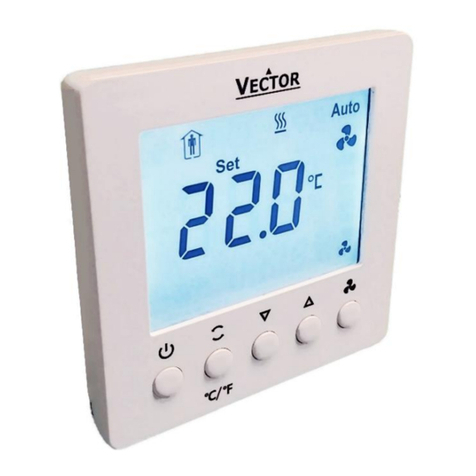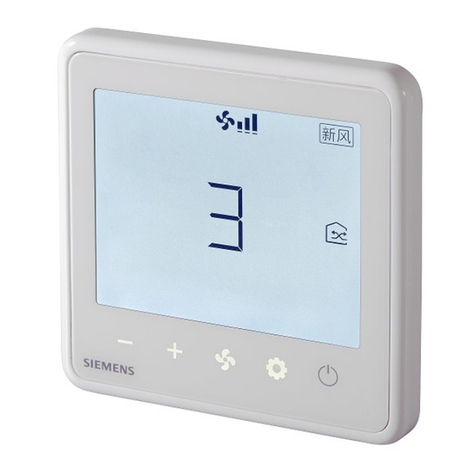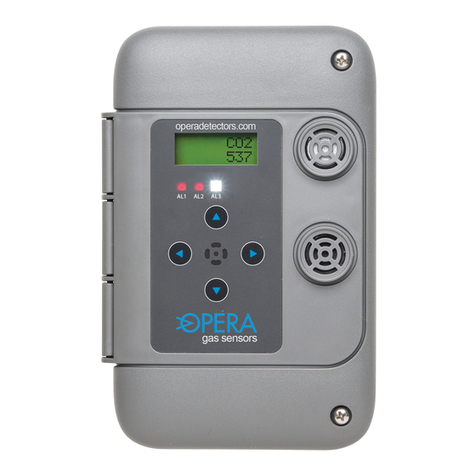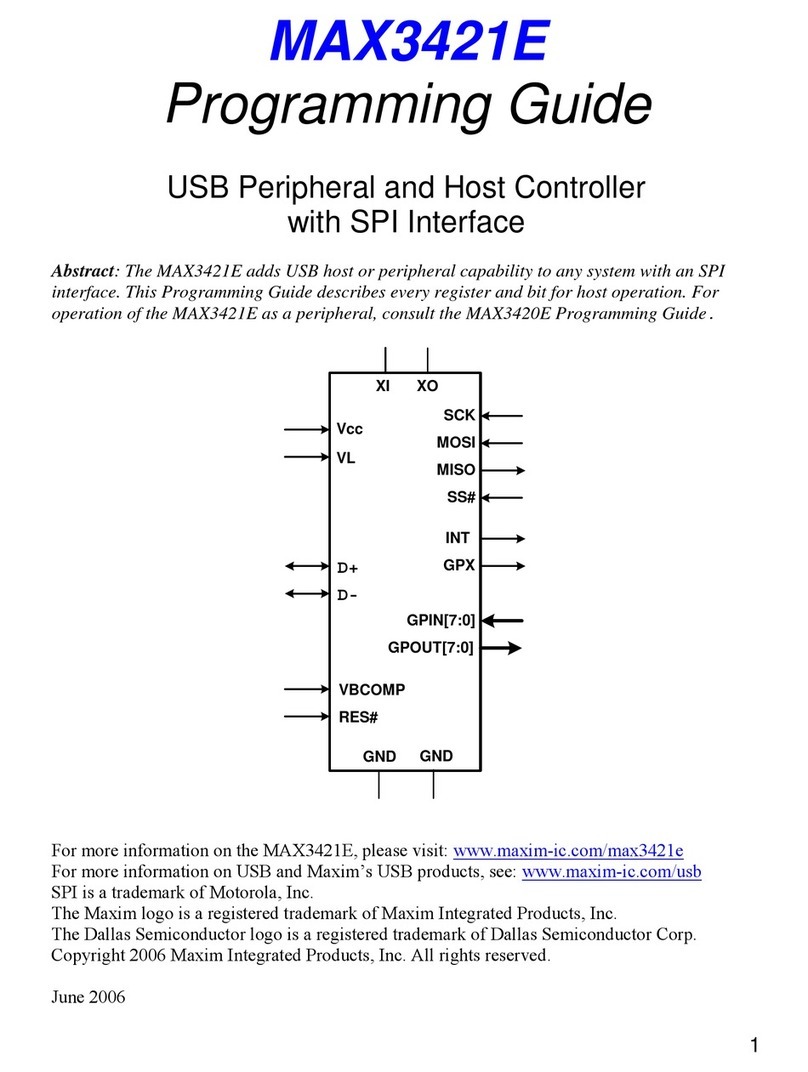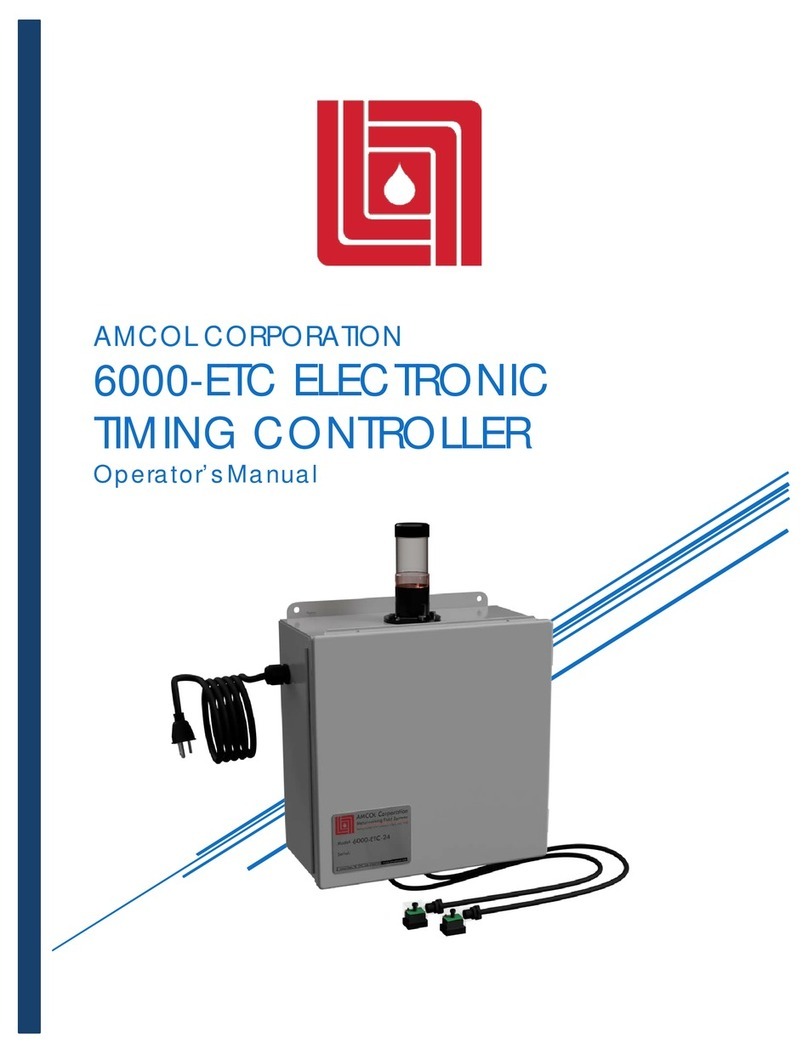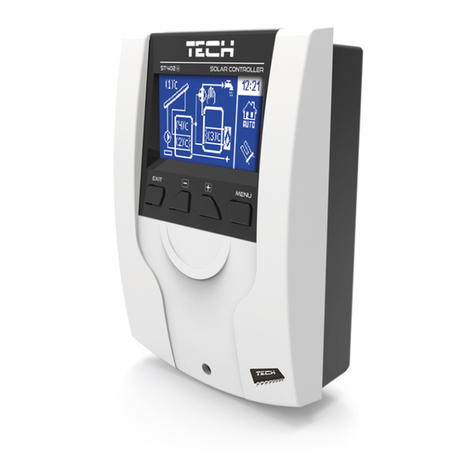Tornatech GPD Manual

1
INSTALLATION AND MAINTENANCE MANUAL FOR
DIESEL ENGINE FIRE PUMP CONTROLLERS
MODEL GPD

2
Table of Contents
GPDV2-Manual-EN v2.2.0.0
1. Introduction
2. Installation
3. Main Features
4. Home
5. Alarms
6. Configuration
7. History
8. Service
9. Download Manuals
10. Language
11. Technical Documents

3
Table of Contents
Introduction......................................................................................................................................................................5
Types of Diesel Engine Fire Pump Controllers..........................................................................................................5
Methods of Starting/Stopping.....................................................................................................................................5
Installation.......................................................................................................................................................................7
FCC Regulations and Radio Standards Specification (RSS) Rules..........................................................................7
Location......................................................................................................................................................................7
Mounting ....................................................................................................................................................................8
Storage.......................................................................................................................................................................8
Wiring and Connections.............................................................................................................................................8
Water Connections.....................................................................................................................................................8
Electrical Wiring .........................................................................................................................................................8
Electrical Connections................................................................................................................................................8
Energy Consumption..................................................................................................................................................9
Incoming Power Connections ....................................................................................................................................9
Circuit protection ........................................................................................................................................................9
Terminal Strip Descriptions......................................................................................................................................10
Quick Start-Up Guide...............................................................................................................................................11
Main Features ...............................................................................................................................................................19
The ViZiTouch..........................................................................................................................................................19
Alarm Bell.................................................................................................................................................................19
First Setup................................................................................................................................................................19
ViZiTouch: Manual Rebooting Method.....................................................................................................................20
Pressure Transducer Test........................................................................................................................................20
Home.............................................................................................................................................................................21
Home (Menu) ...........................................................................................................................................................21
Screen Saver ...........................................................................................................................................................23
Alarms...........................................................................................................................................................................24
Alarms (Menu)..........................................................................................................................................................24
Configuration.................................................................................................................................................................28
Config (Menu) ..........................................................................................................................................................28
NumPad Page..........................................................................................................................................................29
Date and Time Page................................................................................................................................................29
User Login Page / KeyPad Page .............................................................................................................................30
Advanced Configuration Page .................................................................................................................................31
Control Timers..........................................................................................................................................................31
Alarms......................................................................................................................................................................32
Chargers and Batteries............................................................................................................................................33
Starter Configuration................................................................................................................................................34
Sensor Selection......................................................................................................................................................34
Outputs.....................................................................................................................................................................36

4
Update Program Page .............................................................................................................................................37
Factory Settings .......................................................................................................................................................38
Interlock Lockout......................................................................................................................................................38
Inputs........................................................................................................................................................................39
I/O Card Info.............................................................................................................................................................39
Network....................................................................................................................................................................40
Reboot ViZiTouch ....................................................................................................................................................40
History...........................................................................................................................................................................41
History (Menu)..........................................................................................................................................................41
Events Page.............................................................................................................................................................42
Pressure Curves ......................................................................................................................................................42
Power Curves...........................................................................................................................................................43
Saved Logs ..............................................................................................................................................................44
Pump Curves ...........................................................................................................................................................45
Statistic.....................................................................................................................................................................46
All Time Statistics.....................................................................................................................................................46
First Service Statistics..............................................................................................................................................47
Last Service Statistics..............................................................................................................................................48
Download .................................................................................................................................................................48
Service ..........................................................................................................................................................................49
Service .....................................................................................................................................................................49
Download Manuals........................................................................................................................................................50
Language ......................................................................................................................................................................50
Technical Documents....................................................................................................................................................50

5
Diesel engine fire pump controllers are designed to automatically start a diesel engine driven fire pump upon
detection of a pressure drop in the fire protection system. A diesel engine fire pump controller provides automatic
& manual starting and stopping. An automatic start is controlled by a pressure transducer or by remote automatic
devices such as a deluge valve. A manual start is controlled by remote manual button or by controller pushbutton.
The automatic shutdown option provides a 30-minute automatic stop after automatic start once all starting causes
have returned to normal. The diesel engine fire pump controller includes two battery chargers to ensure the
engine batteries are continuously charged.
Types of Diesel Engine Fire Pump Controllers
FIRE PUMP CATALOG NUMBER
MODEL No. EXAMPLE: GPD-12-120
Model Prefix: GPD, GPDFM
Battery Voltage: 12=12v, 24=24v
Incoming Voltage: 120=110/120V 50/60Hz, 220=208/240V 50/60Hz
Methods of Starting/Stopping
The controllers are available as combination automatic / non-automatic with provision for manual or automatic
shutdown (an automatic shutdown is only possible after an automatic start).
METHODS OF STARTING
AUTOMATIC START
The controller will start automatically on low pressure detection by the pressure sensor when the pressure drops
below the cut-in threshold.
MANUAL START
The engine can be started by pressing the CRANK 1 or and/or CRANK 2 push button, regardless of the system
pressure, when the Main Selector switch is in the HAND position. The Fuel Solenoid Valve will open as soon as a
CRANK button is pressed and will remain in this state.
REMOTE MANUAL START
The engine can be started from a remote location by momentarily closing a contact of a manual push button.
REMOTE AUTOMATIC START, DELUGE VALVE START
The engine can be started from a remote location by momentarily opening a contact connected to an automatic
device. The controller must be in automatic mode.
SEQUENTIAL START
In case of a multiple pump application, it may be necessary to delay the starting of each motor when there is a
water pressure drop to prevent simultaneous starting of all motors.
FLOW START, HIGH ZONE START
The pump can be started by opening/closing a contact on the FLOW/ZONE START/STOP input.
WEEKLY START
The engine can be started (and stopped) automatically at the preprogrammed time.
TEST START
The motor can be started manually by pressing the run test button.
Introduction

6
METHODS OF STOPPING
MANUAL STOP
Manual stop is done by pressing the STOP push button. Note that pressing the stop push button will stop the
engine only if all starting causes have disappeared.
AUTOMATIC STOP
The automatic stop is possible only after an automatic start and this function has been activated. When this
function is Enabled, the motor is automatically stopped 30 minutes (adjustable) after the restoration of the
pressure (above the cut-out threshold) given that no other run cause is present.
FLOW STOP, HIGH ZONE STOP
If the controller has been started by the FLOW/ZONE START/STOP input and the signal has returned to normal,
the motor will be stopped given that no other run cause is present.
EMERGENCY STOP
The emergency stop is always possible in any running condition and is done by positioning the main selector
-switch to the OFF position.

7
This diesel controller is UL listed and FM certified. The controller is built in accordance with the latest edition of the
National Fire Protection Association standard for the Installation of Centrifugal Fire Pumps, NFPA No.20
(Centrifugal Fire Pumps 2013 Edition). The controller is intended to be installed in accordance to NFPA 20-2013
and
in the USA National Electrical Code NFPA 70
In Canada Canadian Electrical Code, Part 1
Others * Local Electrical Codes *
* Only American and Canadian applicable codes have been considered during the design of the controllers and the
selection of components.
Except in some cases, the controller is also seismic approved and has been tested in accordance with the ICC-ES
AC156, IBC 2015 & CBC 2016 standards. Proper installation, anchoring and mounting is required to validate this
compliance report. Refer to this manual and drawings to determine the seismic mounting requirements and location
of the center of gravity (you may need to contact factory). The equipment manufacturer is not responsible for the
specification and performance of anchorage systems. The structural engineer of record on the project shall be
responsible for anchorage details. The equipment installation contractor shall be responsible for ensuring the
requirements specified by the structural engineer of record are satisfied. If detailed seismic installation calculations
are required, please contact the manufacturer for the performance of this work.
FCC Regulations and Radio Standards Specification (RSS) Rules
To comply with FCC and Industry Canada RF exposure compliance requirements, a separation distance of at least
20 cm must be maintained between the antenna of this device and all nearby persons. This device must not be co-
located or operating in conjunction with any other antenna or transmitter.
This device complies with Industry Canada licence-exempt RSS standard(s). Operation is subject to the following
two conditions: (1) this device may not cause interference, and (2) this device must accept any interference,
including interference that may cause undesired operation of the device.
This device complies with part 15 of the FCC Rules. Operation is subject to the following two conditions: (1) This
device may not cause harmful interference, and (2) this device must accept any interference received, including
interference that may cause undesired operation.
Note: This equipment has been tested and found to comply with the limits for a Class A digital device, pursuant to
part 15 of the FCC Rules. These limits are designed to provide reasonable protection against harmful interference
when the equipment is operated in a commercial environment. This equipment generates, uses, and can radiate
radio frequency energy and, if not installed and used in accordance with the instruction manual, may cause harmful
interference to radio communications. Operation of this equipment in a residential area is likely to cause harmful
interference in which case the user will be required to correct the interference at his own expense.
“Changes or modifications not expressly approved by the party responsible for compliance could void the user's
authority to operate the equipment.”
Location
The controller shall be located as close as practical to the engine/motor it controls and shall be within sight of the
engine/motor. The controller shall be located or protected such that it will not be damaged by water escaping from
pump or pump connections. Current carrying parts of the controller shall be not less than 12 in. (305 mm) above the
floor level.
Installation

8
Working clearances around controller shall comply with NFPA 70, National Electrical Code, Article 110 or C22.1,
Canadian Electrical Code, Article 26.302 or other local codes.
The controller is suitable for use in locations subject to a moderate degree of moisture, such as a damp basement.
The pump room ambient temperature shall be between 39°F (4°C) and 104°F (40°C) (If a temperature option is
included, see the rating label for maximum temperature).
The standard controller enclosure is rated NEMA 2. It is the installer's responsibility to insure that either the
standard enclosure meets the ambient conditions or that an enclosure with an appropriate rating has been
provided. Controllers must be installed inside a building and they are not designed for outside environment. The
paint color may change if the controller is exposed to ultraviolet rays for a long period of time.
Mounting
The fire pump controller shall be mounted in a substantial manner on a single incombustible supporting structure.
Wall mounted controllers shall be attached to the structure or wall using all four (4) mounting ears provided on the
controller with hardware designed to support the weight of the controller at a height not less than 12 in. (305 mm)
above floor level. Floor mounted controllers shall be attached to the floor using all holes provided on the mounting
feet with hardware designed to support the weight of the controller. The mounting feet provide the necessary 12 in.
(305 mm) clearance for current carrying parts. For seismic applications, the mounting arrangement should be rigid
wall and base only. The structural engineer of record on the project shall be responsible for anchorage details.
Storage
If the controller is not installed and energized immediately, Tornatech recommend following the instructions from the
chapter 3 of the NEMA ICS 15 standard.
Wiring and Connections
Water Connections
The controller must be connected to the pipe system according to the latest edition of NFPA20 and also to a drain
pipe. The water connections are on the left side of the controller. The connection to the system pressure is a Male
½ NPT. If a drain is present, the connection to the drain is a tapered connection for plastic tubing.
Electrical Wiring
The electrical wiring between the power source and the diesel engine fire pump controller shall meet the NFPA 20,
Chapter 12.3.5.1, 12.3.5.2 and 12.2.5.3, NFPA 70 National Electrical Code Article 695 or C22.1 Canadian Electrical
Code, Section 32-200 or other local codes.
Electrical Connections
A licensed electrician must supervise the electrical connections. The dimension drawings show the area suitable for
incoming power and motor connections. No other location shall be used. Only watertight hub fittings shall be used
when entering the cabinet to preserve the NEMA rating of the cabinet. The installer is responsible for adequate
protection of the fire pump controller components against metallic debris or drilling chips. Failure to do so may
cause injuries to personnel, damage the controller and subsequently void warranty.

9
Energy Consumption
Diesel Controller with boost charger
Model / State
120VAC
220/240VAC
VDC Output
12VDC / @
No charge
1.0A
1.0A
13.8V
12VDC / @
Full charge*
6A
4A
24VDC / @
No charge
1.0A
0.5A
27.6V
24VDC / @
Full charge**
9A
6A
*12 amps through each battery
**10 amps through each battery
Incoming Power Connections
Diesel engine driven fire pump controllers shall be powered by a dedicated source protected by a fuse or circuit
breaker. Verify the label on the cabinet to select the correct protection. Always follow this procedure when
connecting or disconnecting the controller: Connect both batteries before connecting the AC power. Disconnect the
AC power before disconnecting the batteries. Disconnecting the batteries while the AC is connected may result in
severe damage to the controller electronic boards.
Circuit protection
CB1 protects battery charger 1 and CB2 protects battery charger 2. CB3 protects the control circuit from battery 1
and CB4 protects the control circuit from battery 2.
Always follow this procedure when connecting or disconnecting the controller: Connect both batteries before
connecting the AC power. Disconnect the AC power before disconnecting the batteries.

10
Terminal Strip Descriptions
A-F : Alarm Output Terminals
(DPDT Relay, 11/21:Common, 12/22:Normally Closed,
14/24:Normally Open):
A: Controller Trouble (Fail safe)
B: Engine Run
C: Main SS in HAND/OFF position
D: Engine Trouble
E: Pump Room Alarm
F: Optional Output 1
G-T : Field Input Terminal
(Dry Contact Only: Voltage Free):
G: Low Fuel Level (NO)
H: Remote Automatic Start (NC)
I: Deluge Valve Start (NC)
J: Fuel Tank Leak (NO)
K: High Fuel Level (NO)
L: Engine RPM Magnetic Pickup
M: ECMS Elec. Ctrl. Switch in Alternate Position
N: FIM Fuel Injection Malfunction
O: ECMW Elec. Ctrl. Warning
P: ECMF Elec. Ctrl. Fault
Q: PLD Low Suction Pressure
R: High Raw Water Temperature
S: Low Raw Water Flow
T: LET Low Engine Temperature
U : Engine Terminals :
The terminals are numbered according to the standard:
1 - FS : Fuel Solenoid Valve
(ETR - Energized To Run)
2 - ER : Engine Run contact
3 - OS : Engine Overspeed contact
4 - OP : Engine Oil Pressure contact
5 - WT : Engine Coolant Thermostat contact
6 - B1 : Battery #1 positive
8 - B2 : Battery #2 positive
9 - C1 : Start Contactor #1
10 - C2 : Start Contactor #2
11 - GND : Ground
12 - ST : Stop Fuel Solenoid Valve
(ETS - Energized To Stop)
V-AA : Bell / Solenoid Valve / Analog inputs
V: Bell output
W: Test Solenoid Valve
X: Analog inputs
AI1: Discharge Pressure transducer
AI2: Optional additional Discharge Pressure transducer
AI3: Analog Input sensor (depending on the options)
AI4: Analog Input sensor (depending on the options)
AI5: Analog Input sensor (depending on the options)
Y: AC monitoring
Z: CANBUS: UP to ViZiTouch, DOWN to Exp. IO board
AA: Factory reserved power connections

11
Quick Start-Up Guide
The rating label is the most important label. It must be read carefully to ensure the compatibility between the
controller and the installation.
Verify that the controller is installed securely to the wall, or on the mounting stand (optional). Verify the Main
Selector Switch is in the “OFF” position. This selector switch is also called the “HOA” and can be placed in 3
positions: “H” Hand/Manual, “O” OFF, “A” Automatic.

12
Open the controller's door and verify that the disconnect switch and all circuit breakers are in the “OFF” position.
Verify and/or install the proper water connections for the water input and the drain. They must be securely installed
and tightened. Refer to the silkscreen markings on the plastic cover.

13
Connect all cables between the engine control panel and the controller engine terminals (Identified as “U” on the IO
board diagram displayed in the Terminal Strips Descriptions in the manual). Secure with the appropriate torque as
indicated on the torque label and verify all connections. Connect the AC main line and ground to the AC terminal in
the controller.
Activate the disconnect switch (if present) and all breakers by setting them to the "on" position. The controller will
boot up for the first time.

14
Once the controller has booted up, the “First Start Up” page appears. Press “User Login” and enter a valid
authorization code. Once logged in, press “Power”.
The “Power” page will automatically validate the power if no alarm is detected and if the power meets the
requirements. Note: The power validation timer might not appear if all is adequate immediately.
To continue to next step, press “ <First Start Up “.

15
Press “Engine First Startup” and turn the Main Selector Switch to the “HAND” position.
Note: Before starting the engine, verify that the engine has been officially commissioned (by an authorized engine
representative or service dealer) and that the exhaust pipe is connected properly.
Note: You can choose to skip this step completely by selecting “Skip engine validation step”. This selection will be
recorded in the logs.
- Press on one or both of the green crank buttons to start the engine.
- With the engine started and running, a timer will start counting.
Note: You can choose to bypass the timer by pressing the “Skip” button. This selection will be recordred in the logs.
- During this time, the controller will verify that no alarms are detected. If an alarm appears, stop the engine by
pressing the “STOP” button and then place the Main Selector switch to the OFF position. Take appropriate action to
resolve the alarm that has appeared. Do not stop the engine only by turning the Main Selector switch to the “OFF”
position. If no alarms are detected by the expiration of the timer, stop the engine by pressing the “STOP” button and
then place the Main Selector switch to the OFF position.
To continue to next step, press “ ˂ First Start Up “.

16
Press “Pressure”.
- Verify that the pressure reading on the screen matches with the calibrated pressure gauge installed on the
sensing line.
- Choose the desired units of measurement for pressure reading.
- Adjust, if required, the range of the digital pressure gauge at Max. Pres.
- Insert the Cut-Out and Cut-In pressure values of the fire pump.
- Insert, if so desired, the Cut-Out and Cut-In pressure values of the jockey pump.
Note: The jockey pump Cut-Out and Cut-In values must be set at the jockey pump controller itself. Inserting these
values at the Fire Pump Controller is only for pressure recording data purposes.
To continue to next step, press “ ˂ First Start Up “.
Go back to the controller start-up page and press the “Other Configuration” button. Enter the time and date. Select
the “Automatic shutdown” and the duration the pump will keep running after the automatic stop if an automatic stop
is desired. Select the frequency at which the periodic test will occur, the day of the week, the hour and the duration
of the test. Also, enter the duration of the Manual Run Test.

17
From the “Home” page, verify that the displayed values are correct.
Turn the “Main Selector Switch” to the “AUTO” position to activate the “Automatic” mode. This is the preferred
position and from now on, the “Main Selector Switch” should always remain in that position.

18
The “First Start up” is now completed. The controller is fully installed and configured.

19
The ViZiTouch
A: Power LED 3 colors: Pulsing green if the ViZiTouch is properly powered.
B: Crank 1 button: Used to manually crank the starter from battery 1 while in "HAND" mode.
C: Crank 2 button: Used to manually crank the starter from battery 2 while in "HAND" mode.
D: Stop button: Used to stop the engine if all starting conditions are gone.
E: Run Test button: Used to start the manual run test. Be aware that water will flow through the drain during the
test.
F: Front USB Connector: USB Device connector used for file download, software updates, service reports.
G: Touch Screen: 7 inch color touch screen LCD with protective cover.
H: Locking mechanism for the protective cover of the screen. Push to open.
I: CANBUS connector for communication with IO board.
J: Side USB connector.
K: Ethernet connector.
Warning
After 2 years of service, the Vizitouch battery may become less efficient and could lose the time after a shutdown.
Alarm Bell
The alarm bell is activated under default faulty conditions stated by the NFPA20 standard.
Any of these conditions will energize the alarm bell but may be silenced, except in some cases, by pressing on the
the “Silence bell” button on the Alarms page. When silenced, the alarm bell restarts ringing if a new fault occurs or if
the alarm conditions remain unchanged after 24 hours. The alarm bell automatically stops ringing if alarm
conditions are not present anymore.
Note: Other optional or user defined conditions can also activate the bell and can be configured by the user. See
section 5 and verify drawings affixed inside the cabinet for more details.
First Setup
The First Setup must be done prior to using the controller. Completing the First Setup is the only way to access the
homepage and enable the automatic mode of the controller.
Main Features

20
ViZiTouch: Manual Rebooting Method
If required, here is the procedure to manually reboot the ViZiTouch:
1- Turn OFF all disconnecting means to de-energize the ViZiTouch. The ViZiTouch's screen should turn black.
2- Press the stop button or wait until the ViZiTouch's LED extinguishes.
3- Wait 10 seconds.
4- Turn ON all disconnecting means.
Pressure Transducer Test
The controller will test the pressure transducer at least once a week if no manual run test or no weekly test has
been conducted. During the test, the pressure reading will drop to zero but the controller will not see it as a starting
request. This pressure drop will be recorded in the “Pump Curve” page and in the logs with the message.
Table of contents
Other Tornatech Controllers manuals
